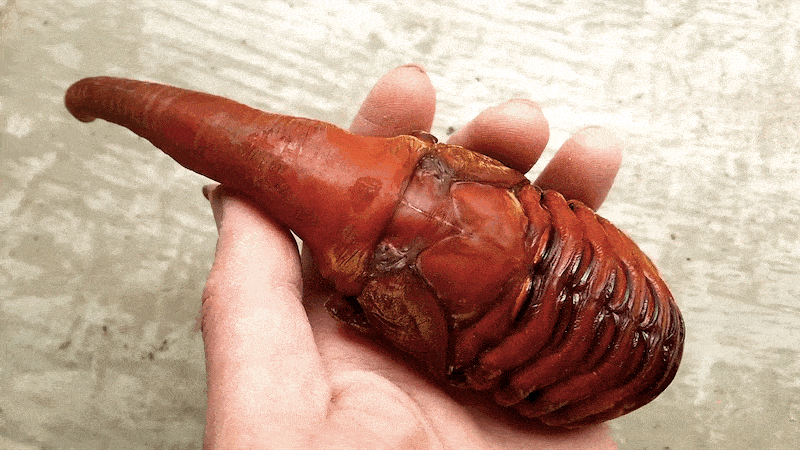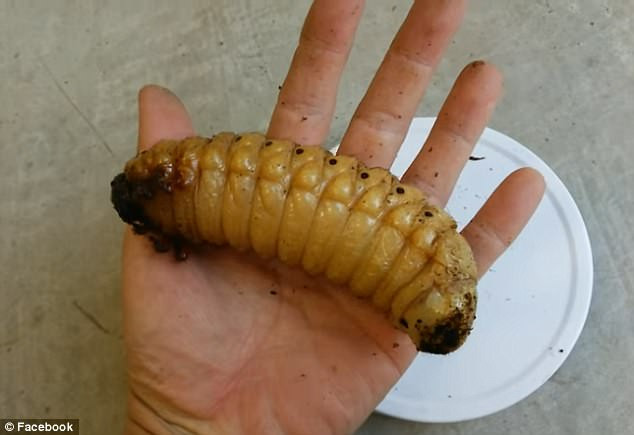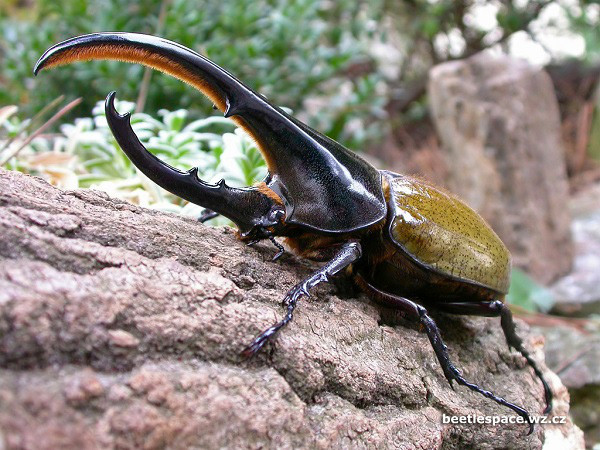You will fall back when you know the truth about this
Looking at it, many people have decided that this is an "alien" creature but the truth is .
When you see this creature, you must have thought they were aliens? Because it looks really weird, isn't it?

Athlete beetle.
But no, they're actually a beetle - specifically the Hercules Beetle.
It is known that this is a beetle that is gradually forming and developing its tough shell in a cocoon.
According to the insect researcher, each beetle larvae will "sleep" in the cocoon about 18 months before officially becoming an adult - with a hard shell and solid horn-type pliers.

Hercules beetle larvae sleep peacefully in cocoons.
Before being inhabited in that strange cocoon, larvae in the early stages of development often use decaying humus and wood as food - energizing the hard shell.
The study of organisms said that Hercules beetles ranked 3rd in the "crisis" of all beetles. They usually live in South America with a body length of up to 17cm (including horns).
Two long, curved, solid horns that occupy most of the body length are weapons used to confront the enemy.

After "molting" , the athlete's beetle has a solid appearance and the horns look just scared.
Athlete beetles have the ability to carry something heavier . 850 times the body weight on the hard shell. Perhaps it was because of this that it was named Hercules.
Another special point in this species is that the beetle beetle often mate during the rainy season - this time the male becomes extremely aggressive.
Male individuals often fight with each other, who wins the right to mate with children. When fighting, they use their horns to lift their opponents and knock them to the ground.
You can completely distinguish male and female Hercules beetles. Adult males possess large horns that protrude ahead, while females are completely devoid of horns. Without the horns, the bodies of these beetles are long and larger.

Male beetle (left) and female (right).
But as strong as athlete, the life cycle of Hercules beetles is only about 1.5 years - 2 years, in which they live underground larvae for 10-16 months, and live for 4 - 6 months at mature.
The face of the aggressive beetles has a frightening appearance
- 90% of people will fall back when they know the truth about the medieval virgin belt
- Fall back with the most incredible facts in the world
- 7 facts make you fall back on the ivory pearl legs of cat bosses
- Things you don't know about Himalayan pink salt
- 9 facts about ducks that make you fall back
- The facts about hygiene habits make us fall back
- Leaving the wallet in the back pocket is the cause of back pain
- The truth about the leather on the backpack that few people know about
- Super interesting things about math you will definitely fall back
- The truth makes everyone fall back to pure water
- 10 facts that make you fall back on your body
- Why does autumn make you sick?
 Why do potatoes have eyes?
Why do potatoes have eyes? 'Tragedy' the world's largest carnivorous life: Death becomes ... public toilet
'Tragedy' the world's largest carnivorous life: Death becomes ... public toilet Tomatoes were once considered 'poisonous' for 200 years
Tomatoes were once considered 'poisonous' for 200 years Detecting microscopic parasites on human face
Detecting microscopic parasites on human face